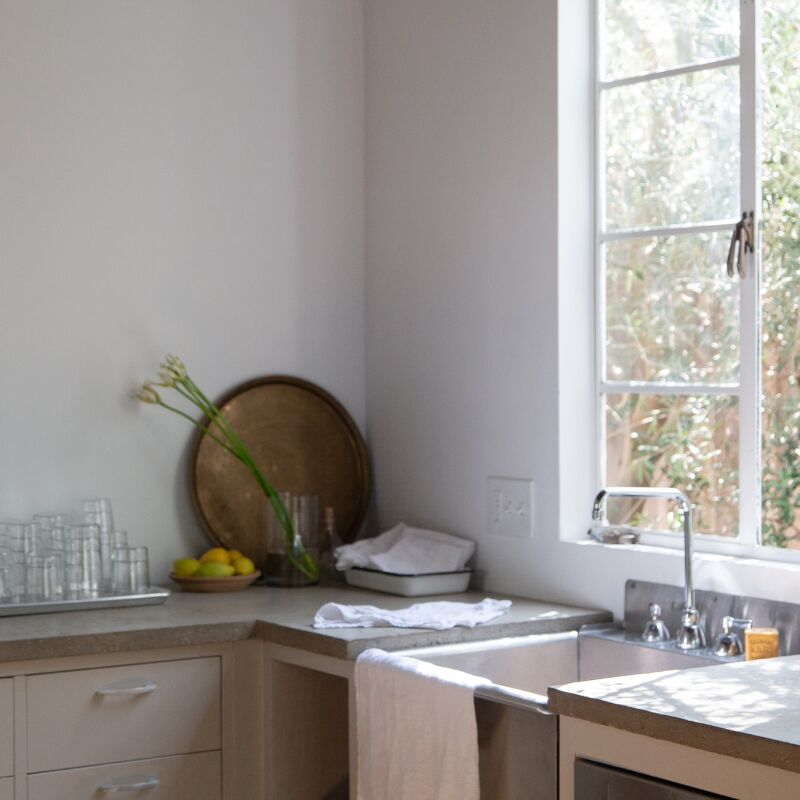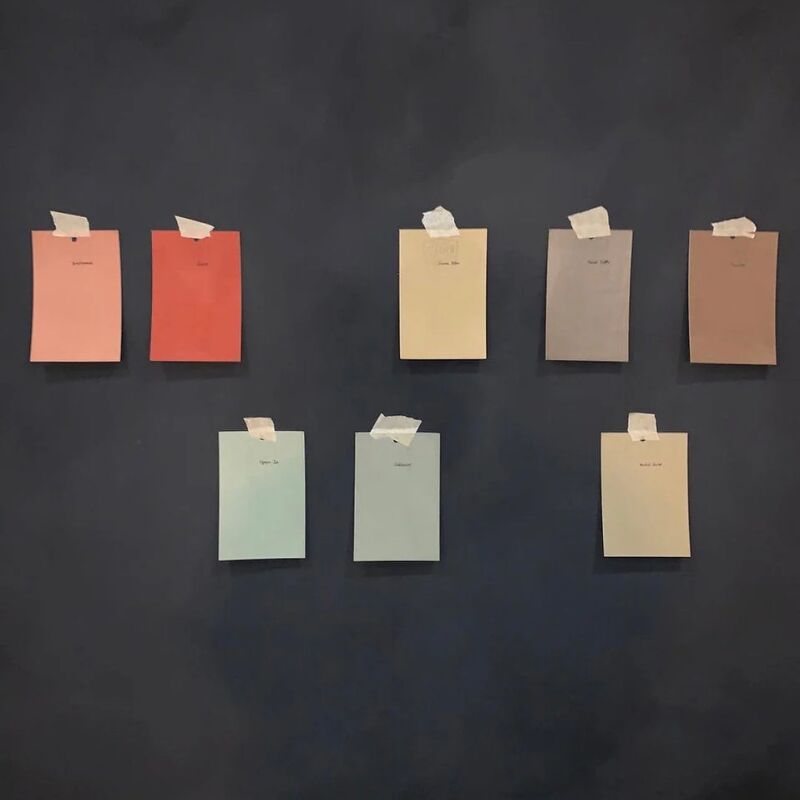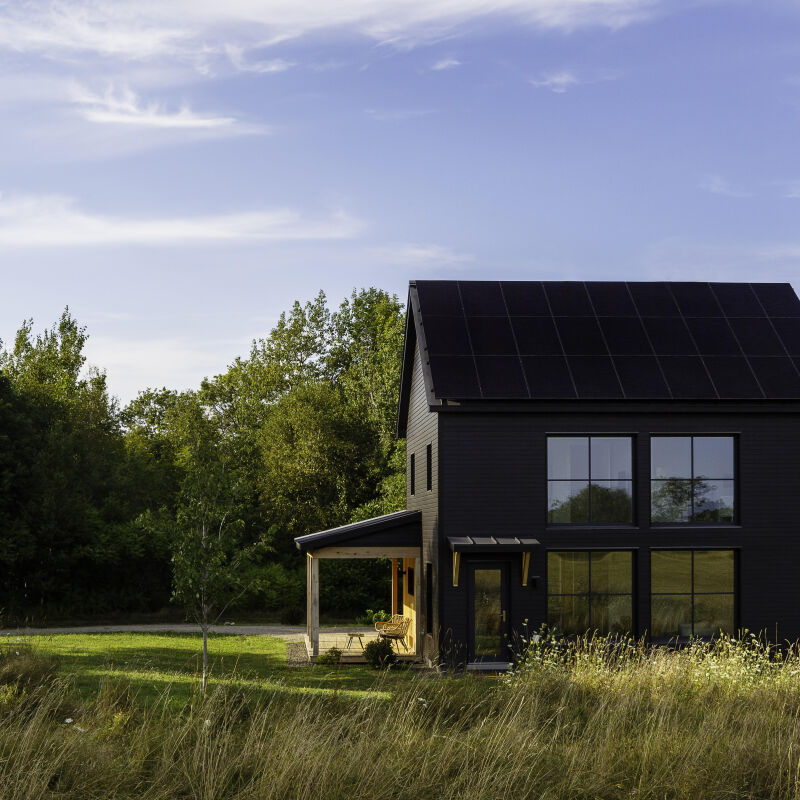Over 10 years of Remodelista, we’ve seen architects, designers, and homeowners do inventive things with stair runners (which, historically, tend to be a little uninteresting). There was this dramatic green stair runner, and this casual painted runner. But do stair runners actually have a purpose? Do you really need one?
To get some answers to common questions about stair runners, we talked with designer Victoria Kirk, who established Victoria Kirk Interiors in 2007. Her company, based in Larchmont and Sag Harbor, New York, focuses mostly on residences in Westchester, Sag Harbor, and New York City. After more than two decades in the business, Kirk can provide plenty of intel on the subject of carpeting for stairs.

What are the pros and cons of stair runners?
There are a number of reasons to install carpeting on stairs. Kirk cites two big pros: It reduces noise made by people clattering up and down the stairs, and it adds a finished look to a stairway. Plus, in some circumstances, it makes stairs safer—for example, young children are less likely to get hurt by falling on padded steps.
But Kirk doesn’t feel runners always make stairs safer. “I live in an old house where the stairs are super steep and the treads are really narrow. If I had carpet on them, I’d be afraid of sliding. I prefer bare wood. But stairs with deeper treads should be fine with carpet.” Obviously, to be safe, stair runners should not be made of slippery material (such as silk or linen). And they must be properly installed with no loose corners to trip over.
Another pro: Foot traffic can mar the finish on wooden treads and leave scuff marks on painted risers (the vertical part of the stairs, between the treads). A runner protects both treads and risers from wear and tear. (Another option: the no-shoes-in-the house rule.)
Still, the look is more suited to traditional homes than modern ones. And bare wood steps are easier to keep clean than carpeted stairs. Vacuuming stairs is usually an awkward chore.

What’s the best material for a stair runner?
“An all-wool carpet is preferable aesthetically,” says Kirk. “There’s a theory that a synthetic or blend will hold up better, but I don’t really believe it. People first and foremost want the looks, and wool delivers that.” She’s a big fan of the striped flat-weave runners made of 100 percent wool by the British company Roger Oates Design.
Natural fibers like sisal and jute may not be your best choice, as they’re easily stained and can be rough on bare feet. But, she says, “sisal or jute is a great look and it’s cheap.” These days indoor/outdoor polypropylene that looks like sisal is becoming popular—it’s durable and easy to clean.

Is a dark color better than light? And patterns—yes or no?
“With a runner, you don’t want to go too light or too dark,” says Kirk. “Dark shows all the lint, while light-colored carpeting shows dirt and scuffs. I always push for a medium tone.”
As for the pattern, Kirk says, “If there’s a moment to have some fun on the stairs, go for it. I like vertical stripes, like the Roger Oates flatweave.” What she doesn’t recommend: “Bold geometric contrasting patterns. They can be dizzying, and make stairs hard to navigate—you can’t figure out where your next step is.”
Another thing to keep in mind with a pattern: If you need to match the pattern so each step looks the same, you could end up with a lot of waste (and increased cost).

How are stair runners installed?
Most homeowners aren’t aware that there are two styles of installation for stair runners: “Waterfall,” in which the runner flows over the stairs and is tacked down at the base of each step; and “Hollywood,” where the runner is tacked down around the tread and fits close to the risers.
“The decision usually depends on how your stairs are constructed,” says Kirk. “If there’s a quarter-round molding under the nose of the tread, you use Waterfall so the carpet falls gracefully over that edge. If there’s no molding, you go with the more tight-fitting installation, Hollywood.”
Unseen staples typically hold the padding and runner securely in place, though sometimes a “tackless strip” is used—a piece of wood that runs the width of the steps and is studded with sharp nails or tacks. Typically, stair runners are installed over a padding or underlay, which both reduces noise and protects the carpet from wear. A bonus effect: cushioning makes stairs feel softer underfoot, a boon to babies navigating on their hands and knees.
And what about those rods that hold stair runners in place? “Maybe for a grand staircase in a house in Greenwich, Connecticut,” says Kirk. “But they’re purely decorative.”

Is there a rule of thumb for how much of the tread should be covered?
“It depends how wide your stairs are,” says Kirk. “In a three- to four-foot-wide staircase, you want to leave about three or four inches of wood exposed on either side. But if your stairs are five feet across, you’d adjust your runner proportionally—maybe to a seven-inch reveal on each side.”
As for “wall-to-wall” carpeting over stairs: “Nobody does that anymore,” says Kirk.
Are stair runners made in standard widths?
They are. The Roger Oates flatweave, for example, comes in three widths: 24 inches, 27 inches, and 33.5 inches. But you can also have runners made to order. “Often people buy broadloom and have it cut to size,” says Kirk. In those cases, you’ll need to have the edges bound.

How much does a stair runner cost?
That depends on your choice of carpeting and the complexity of installation. “A standard-size runner is your most cost-effective choice,” says Kirk. “But the labor always costs more than the material.”
Kirk offers a ballpark estimate of $20 to $50 per square foot for broadloom, but that’s only the beginning. “The add-ons include padding, edging, and then the installation itself. If you have curved steps or landings, for example, pie-shaped pieces are needed to fit them.” And to get the job done right, you’ll want to hire experienced installers. That way your runner is sure to wear well and to enhance your home.
What if I prefer bare stairs but like the look of a runner?
You can save money by simply painting a runner (or stripes) on the stairs, as in this Remodeling 101 post on Nautical Stripes on the Stairs. Just choose a color that contrasts nicely for an instant runner effect, no vacuuming needed.
More Remodeling 101 guides:
- Remodeling 101: 12 Essential Tips for the Perfect Paint Job
- Remodeling 101: A Guide to the Only 7 Types of Tile You Need to Know
- Remodeling 101: Consider the Baseboard (and, What You Need to Know)
Frequently asked questions
What is a stair runner?
A stair runner is a piece of carpet or other textile material that runs down the length of a staircase, providing both protection for the stairs and a decorative element.
What materials are stair runners made of?
Stair runners can be made of many different materials, including wool, synthetic fibers like nylon or polyester, natural materials like sisal or seagrass, and even leather.
What are the benefits of having a stair runner?
Stair runners can help prevent slips and falls on slick or polished stairs, absorb sound to minimize noise in the home, and add a stylish touch to any staircase.
How do I choose a stair runner that matches my decor?
Consider the color scheme and style of your home when choosing a stair runner. Neutral colors like beige or gray can match any decor, while vibrant patterns or rich textures can add a pop of personality to your staircase.
Can I install a stair runner myself?
Installing a stair runner requires precise measurements and careful attention to detail, so it is recommended to hire a professional installer. However, if you have experience with flooring installations and confident in your abilities, it can be a DIY project.
How do I care for my stair runner?
The care and maintenance of your stair runner will depend on the specific material it is made of. Generally, vacuuming and spot cleaning as needed will help keep your stair runner looking its best. Wool runners may require periodic professional cleaning to maintain their appearance.





Have a Question or Comment About This Post?
Join the conversation